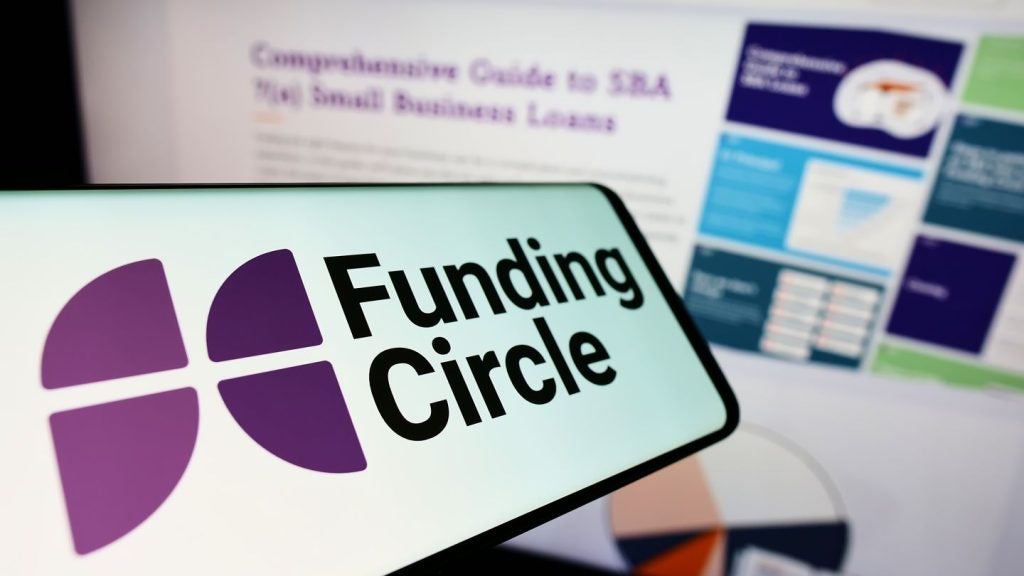The Polish lease industry has reached a number of milestones over the last 12 months, as the domestic market continues to grow in importance within the wider European leasing sector. Paul Golden writes.
Many countries reference 2008 as the high water mark of lease activity – signalling as it does the year when the global financial crisis began – and Poland is no exception.
Last year, companies reporting to the Polish Leasing Association finalised transactions with a total value of PLN82.6bn (€19.2bn). Investments financed by leasing and loans recorded a growth rate of 21.8%, the highest level of growth recorded by the Polish leasing sector in the last 11 years.
But as well as looking back – Poland marked the 15th anniversary of its accession to the EU in 2018 and the Polish Leasing Association also celebrated its 25th year – the industry has plenty of reasons to be positive about its current and future prospects.
Active Contracts
Data from Leaseurope indicates that the Polish leasing industry, thanks to high levels of financing from companies, moved up from seventh to fifth place in the European ranking in 2018. The portfolio of active industry contracts increased as dynamically as the value of the new contracts explains Andrzej Sugajski, director general of the Polish Leasing Association.
“The value of contracts serviced by the leasing industry rose by 22.8% compared to 2017,” he says.
How well do you really know your competitors?
Access the most comprehensive Company Profiles on the market, powered by GlobalData. Save hours of research. Gain competitive edge.

Thank you!
Your download email will arrive shortly
Not ready to buy yet? Download a free sample
We are confident about the unique quality of our Company Profiles. However, we want you to make the most beneficial decision for your business, so we offer a free sample that you can download by submitting the below form
By GlobalData“These good results can be attributed to a record level of financing of passenger vehicles and trucks up to 3.5 tons – light vehicles have a 48.4% market share – and entrepreneurs’ unwavering interest in financing machines and other equipment, which account for 26.3% of the market, as well as heavy transport vehicles, which have a market share of 23.7%.”
In 2018, the value of contracts for financing light vehicles increased by over 30%. The announcement of tax changes regarding use of cars in business, and their coming into force on 1 January 2019, contributed to a significant increase in the volume of financed passenger vehicles in the fourth quarter.
These changes effectively restrict the amount of expenses related to the purchase and operation of a vehicle which can be treated as tax-deductible expenses for purchases made in cash or via credit. Similar restrictions apply to instalments classified as tax-deductible expenses in operating lease, as well as long-, medium- and short-term rentals.
“Therefore, all such forms of car use are now subject to the same limitations and, consequently, the same operating conditions,” says Sugajski. “This principle allows us to assume that leases will remain attractive methods of financing purchases of passenger cars as alternatives to loans or credit agreements.”
After analysing the growth rate of financing of light vehicles over the last five years, it can be concluded that leasing is the instrument that enjoys sustained popularity among Polish entrepreneurs, regardless of changes in regulation, he adds. The total value of machines and equipment financed by the leasing industry rose last year by 17.7% in comparison to 2017. Construction equipment recorded the highest increase, followed by medical equipment and agricultural machinery, while financing of IT equipment rose by almost 10%.
The most important factors affecting the growing level of financing of machines and other equipment by the leasing industry include solid growth in industrial production, faster spending of EU funds from the 2014- 2020 perspective, and accelerations in the pace of public investments and investments made by large and medium-sized companies.
Heavy transport constitutes another important segment of the leasing market. In 2018, assets of this type financed by the leasing industry were worth 11.4% more than in the previous 12 months, with the highest growth rates recorded in aircraft, ships and rolling stock, trucks weighing over 3.5 tons, and trailers and semi-trailers.
Technology Growth
Wojciech Czech, sales director at Grenke Poland, refers to steady growth in financing new technologies, because every entrepreneur striving to maintain a competitive edge has to make investments in their infrastructure.
“There is also an increasing awareness that proper IT solutions allow them to develop faster and to become more efficient,” he adds.
There were similar landmarks for Grenke in 2018, as the company marked its 15th year of operations in Poland.
“From a domestic perspective, we see huge potential in the e-commerce sector, mostly small-ticket items of less than €2,500 value,” says Czech. “The Polish e-commerce market can be considered as one of the most dynamic markets in the world, creating new opportunities for leasing and financing companies, especially those with the ability to quickly adapt to changing market conditions and expectations.”
Leasing has strengthened its position as an important driving force of investment and development for Polish companies and the domestic economy. It stimulates investments, providing companies with access to capital, and has a positive impact on innovation because it facilitates access to advanced and expensive technological solutions. Leasing also contributes to the growth of employment, because more capital means higher productivity, and consequently a greater demand for work.
That is the view of ING Lease Poland CEO Ewa Łuniewska, who also acknowledges that the introduction of new tax regulations from the beginning of this year was a significant development, and slightly weakened the competitiveness of leasing in financing premium cars.
“The market is growing fast, but what makes us very happy is that our business is growing even faster,” says Łuniewska.
“As at the end of 2018, the total value of our portfolio amounted to PLN8.65bn, an increase of almost 20% in comparison to the previous year. Throughout 2018, we recorded an increase of almost a quarter in the value of concluded lease agreements and issued assets.
“It is difficult to say whether the Polish government has taken any direct or indirect action to support the lease finance industry,” she explains.
“The industry is awaiting changes in the Civil Code in the scope of enabling signing of lease agreements electronically. This will significantly simplify the lease and bring it to a new level – and is a must in the digital era.”
Michał Rogowski, sales director – equipment and logistics solutions at BNP Paribas Leasing Solutions Poland, says his organisation also experienced growth in excess of the overall market last year.
“We have seen excellent results in the Polish leasing market, owing to the record level of financing of passenger and commercial vehicles up to 3.5 tons, as well as heavy means of transport,” he says.
“There is also ongoing interest in financing machines and other devices for businesses. Looking at individual areas of activity of Polish leasing companies, we can see that the financing of real estate and other assets plays a less important role.”
As a result, it is little surprise that Rogowski expresses satisfaction with market growth in Poland – and its performance over the last 12 months in particular.
“The market is growing every year, and leasing continues to gain traction as an important driving force for investment and development of Polish companies and the economy globally,” he says.
“This financial solution not only actively encourages investments – enabling companies to optimise their capital – but also facilitates access to advanced and sometimes expensive technological solutions, allowing them to innovate and digitise to keep up with market trends.”
Rogowski refers to a growing number of powerful public investments, including capital expenditure by local governments as well as investments financed from the state budget. In the fourth quarter of 2018, the value of settled EU projects increased to PLN6.7bn or just over €1.5bn per month. The implementation of EU infrastructure projects can be seen primarily in the results of the construction sector.
Small and medium-sized enterprises – which constitute the vast majority of businesses operating in Poland – continue to invest in the development of their businesses, notes Rogowski.
“Research shows that 74% of medium-sized and 61% of small enterprises in 2019-2020 intend to invest, choosing leasing as the second-most-popular form of asset financing after the classic loan, so the prospects for this year are very promising,” he says.
As far as the type of equipment is concerned, the surveyed companies expect a lower level of financing, primarily for passenger vehicles.
“The relatively weak prospects in the first quarter of 2019 were for light vehicles,” explains Rogowski. “Things look better for heavy means of transport, though. The growths of the industrial production and construction sectors indicate that the plant and machinery financing sector will remain the main driver of the leasing market growth in 2019.”
Industry Forecast
The Polish Leasing Association’s forecast for 2019 is for a slowdown in growth after six years of intense market development. The projected 5.5% growth rate is in line with the expected increase in private investments, and the likely growth of the domestic economy in Poland.
The tax changes, which came into force on 1 January 2019, contributed to a significant increase in the volume of financed passenger vehicles in the fourth quarter of 2018, which will, in turn, translate into slightly negative dynamics of financing of light vehicles in 2019, says Sugajski.
“The structure of economic growth, high utilisation of production capacities, results of industrial production and construction, and accelerated utilisation of EU funds mean that machinery financing will remain the main long-term growth driver for the entire leasing industry,” he adds.
“Considering the growing volume of transport and maintained economic growth in the eurozone, trucks will remain an important asset financed by leasing companies.”
Łuniewska agrees that the market is likely to grow at a slower rate this year, although she also refers to a number of potential market developments that could be beneficial. This includes the development of attractive financing offers, additional products and services such as insurance, as well as an adjustment to the price offerings of distributors and importers, and the purchasing decisions of corporate customers and their sensitivity to tax changes.
She observes that leasing started in the early 1990s as an innovation in financing, and is now the most important partner for SMEs and mid-sized corporates in financing basic equipment and machinery.
“It is difficult to imagine the development of entrepreneurship in Poland without the development of the leasing industry,” Łuniewska says.
“What customers most value today when it comes to co-operation with leasing companies is the price of services, but also the fact that they listen to business needs and are able to adjust the terms of contracts to customers’ expectations.”
The speed of making decisions by leasing companies is also important. “Leasing stimulates investments, helps in the development of small and medium enterprises and promotes innovation,” concludes Łuniewska.
“Last year, three-quarters of all cars in Poland were acquired by leasing companies and handed over to clients, so leasing touches every part of the economy. In my opinion, it will be the same in 2019.”







